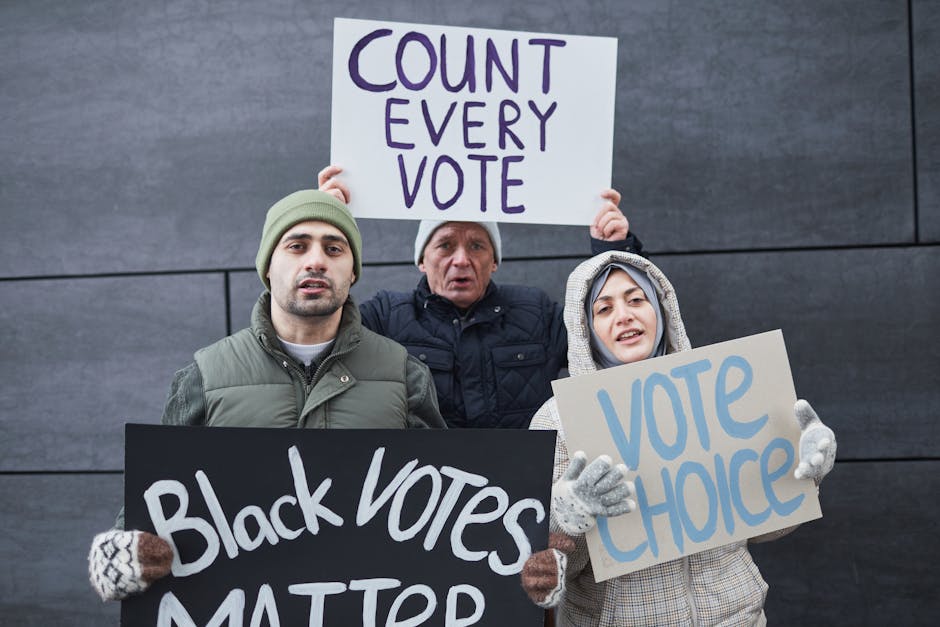Table of Contents
- Introduction
- Benefits of Strategic HR Initiatives
- Importance of Tactical HR Initiatives
- Aligning Strategic and Tactical HR Initiatives
- Measuring the Impact of Strategic HR Initiatives
- Implementing Tactical HR Initiatives for Immediate Results
- Balancing Long-term Goals with Short-term Needs in HR Initiatives
- Case Studies on Successful Strategic HR Initiatives
- Best Practices for Integrating Strategic and Tactical HR Initiatives
- Future Trends in Strategic vs. Tactical HR Initiatives
- Q&A
- Conclusion
“Strategic HR for long-term success, tactical HR for immediate impact.”
Introduction
Introduction:
Strategic and tactical HR initiatives are both essential components of human resource management, but they serve different purposes and require different approaches. Understanding the distinction between the two can help HR professionals determine where to focus their efforts for maximum impact on organizational success. In this article, we will explore the differences between strategic and tactical HR initiatives and discuss the importance of balancing both in HR management.
Benefits of Strategic HR Initiatives
In today’s fast-paced business environment, human resources (HR) departments play a crucial role in driving organizational success. HR initiatives can be broadly categorized into two main types: strategic and tactical. While both types are important for the overall functioning of an organization, strategic HR initiatives are particularly valuable for long-term success and sustainability.
Strategic HR initiatives focus on aligning HR practices with the overall business strategy of the organization. These initiatives are forward-thinking and aim to address long-term goals and objectives. By focusing on strategic HR initiatives, organizations can ensure that their workforce is equipped with the skills and capabilities needed to drive business growth and innovation.
One of the key benefits of strategic HR initiatives is their ability to enhance employee engagement and retention. When HR practices are aligned with the organization’s strategic goals, employees are more likely to feel connected to the mission and vision of the company. This sense of purpose can lead to higher levels of job satisfaction and motivation, ultimately resulting in lower turnover rates and higher levels of employee retention.
Strategic HR initiatives also play a crucial role in talent management and development. By identifying key skills and competencies needed for future success, organizations can proactively develop their workforce through training, mentoring, and career development programs. This not only helps to ensure that the organization has the right talent in place to drive business growth, but also fosters a culture of continuous learning and development within the organization.
Another benefit of strategic HR initiatives is their impact on organizational performance. By aligning HR practices with the overall business strategy, organizations can ensure that their workforce is focused on the right priorities and objectives. This alignment can lead to improved productivity, efficiency, and overall performance, ultimately driving business success.
While strategic HR initiatives are essential for long-term success, tactical HR initiatives also play a critical role in day-to-day operations. Tactical HR initiatives focus on the implementation of HR policies and procedures to address immediate needs and challenges within the organization. These initiatives are often reactive in nature and aim to solve specific problems or issues as they arise.
One of the key benefits of tactical HR initiatives is their ability to address short-term challenges and issues within the organization. Whether it’s resolving employee conflicts, managing performance issues, or addressing compliance concerns, tactical HR initiatives are essential for maintaining a smooth and efficient HR function.
Tactical HR initiatives also play a crucial role in ensuring compliance with laws and regulations. HR departments are responsible for ensuring that the organization complies with labor laws, employment regulations, and other legal requirements. By implementing tactical HR initiatives, organizations can mitigate legal risks and ensure that they are operating within the boundaries of the law.
In conclusion, both strategic and tactical HR initiatives are essential for the overall success of an organization. While strategic initiatives focus on long-term goals and objectives, tactical initiatives address immediate needs and challenges within the organization. By striking the right balance between strategic and tactical HR initiatives, organizations can ensure that their workforce is equipped to drive business growth and innovation while also addressing day-to-day operational needs and challenges. Ultimately, the key to success lies in understanding when and where to focus efforts on strategic initiatives versus tactical initiatives to achieve the best outcomes for the organization.
Importance of Tactical HR Initiatives
In the realm of human resources, there are two main types of initiatives that organizations can focus on: strategic and tactical. While both are important for the overall success of a company, it is crucial to understand the differences between the two and where to focus efforts for maximum impact.
Tactical HR initiatives are often seen as the day-to-day tasks and activities that HR professionals engage in to support the organization’s goals. These initiatives are typically focused on the operational aspects of HR, such as recruitment, training, performance management, and employee relations. While these tasks may seem mundane, they are essential for the smooth functioning of the organization and the well-being of its employees.
One of the key benefits of focusing on tactical HR initiatives is that they can have an immediate impact on the organization. For example, improving the recruitment process can lead to better quality hires, which in turn can improve employee retention and productivity. Similarly, investing in training and development programs can help employees acquire new skills and knowledge, leading to improved performance and job satisfaction.
Another important aspect of tactical HR initiatives is their ability to address specific challenges or issues within the organization. For example, if there is a high turnover rate in a particular department, HR can implement targeted retention strategies to address the issue. By focusing on these tactical initiatives, HR can help solve immediate problems and improve the overall functioning of the organization.
Furthermore, tactical HR initiatives can also help build a positive employer brand and reputation. By providing employees with the support and resources they need to succeed, organizations can create a more engaged and motivated workforce. This, in turn, can lead to higher levels of employee satisfaction and loyalty, which can have a positive impact on the organization’s bottom line.
While tactical HR initiatives are important for the day-to-day functioning of the organization, it is also crucial to focus on strategic HR initiatives. Strategic HR initiatives are long-term initiatives that are aligned with the organization’s overall goals and objectives. These initiatives are typically focused on areas such as talent management, succession planning, and organizational development.
One of the key benefits of focusing on strategic HR initiatives is that they can help organizations build a competitive advantage in the marketplace. By investing in talent management and succession planning, organizations can ensure that they have the right people in the right roles at the right time. This can help organizations adapt to changing market conditions and stay ahead of the competition.
Strategic HR initiatives can also help organizations build a strong organizational culture and values. By focusing on areas such as diversity and inclusion, employee engagement, and leadership development, organizations can create a positive work environment that attracts and retains top talent. This, in turn, can lead to higher levels of employee satisfaction and productivity.
In conclusion, both tactical and strategic HR initiatives are important for the overall success of an organization. While tactical initiatives are essential for the day-to-day functioning of the organization, strategic initiatives are crucial for long-term success and sustainability. By finding the right balance between the two, organizations can create a strong HR strategy that drives business results and helps them achieve their goals.
Aligning Strategic and Tactical HR Initiatives
In the world of human resources, there are two main types of initiatives that HR professionals focus on: strategic and tactical. While both are important for the overall success of an organization, it is crucial to understand the differences between the two and where to focus efforts to achieve the best results.
Strategic HR initiatives are long-term, high-level plans that align with the overall goals and objectives of the organization. These initiatives are focused on creating a competitive advantage, driving organizational growth, and ensuring that the workforce is aligned with the company’s mission and values. Strategic HR initiatives often involve activities such as workforce planning, talent management, succession planning, and organizational development.
On the other hand, tactical HR initiatives are more short-term, day-to-day activities that are focused on the operational aspects of HR. These initiatives are often reactive in nature and are designed to address immediate needs within the organization. Tactical HR initiatives may include activities such as recruitment, onboarding, performance management, and employee relations.
While both strategic and tactical HR initiatives are important, it is essential for HR professionals to strike a balance between the two to ensure that they are effectively supporting the organization’s overall goals and objectives. By aligning strategic and tactical HR initiatives, HR professionals can create a cohesive and integrated approach to managing the workforce.
One way to align strategic and tactical HR initiatives is to ensure that all HR activities are tied back to the organization’s strategic goals and objectives. This means that HR professionals need to have a clear understanding of the company’s mission, vision, and values, and how HR initiatives can support these overarching goals. By aligning HR activities with the organization’s strategic direction, HR professionals can ensure that they are contributing to the overall success of the company.
Another way to align strategic and tactical HR initiatives is to create a comprehensive HR strategy that outlines how HR activities will support the organization’s goals and objectives. This strategy should include a mix of both strategic and tactical initiatives, with a clear roadmap for how these initiatives will be implemented and measured. By having a well-defined HR strategy in place, HR professionals can ensure that they are focusing their efforts on the activities that will have the greatest impact on the organization.
In addition to aligning strategic and tactical HR initiatives, HR professionals also need to be agile and adaptable in their approach to managing the workforce. This means being able to quickly respond to changing business needs and market conditions, and adjusting HR initiatives accordingly. By being flexible and responsive, HR professionals can ensure that they are effectively supporting the organization’s goals and objectives in a rapidly changing environment.
In conclusion, strategic and tactical HR initiatives are both important for the overall success of an organization. By aligning these initiatives and striking a balance between the two, HR professionals can create a cohesive and integrated approach to managing the workforce. By focusing on activities that support the organization’s strategic goals and objectives, HR professionals can ensure that they are contributing to the overall success of the company.
Measuring the Impact of Strategic HR Initiatives

In the world of human resources, there are two main types of initiatives that HR professionals can focus on: strategic and tactical. Strategic HR initiatives are long-term, high-level plans that align with the overall goals and objectives of the organization. These initiatives are designed to drive organizational success and create a competitive advantage in the marketplace. On the other hand, tactical HR initiatives are short-term, day-to-day activities that are focused on the operational aspects of HR, such as recruitment, training, and performance management.
When it comes to measuring the impact of HR initiatives, many organizations struggle to determine where to focus their efforts. Should they invest more resources in strategic initiatives that have the potential to drive long-term success, or should they focus on tactical initiatives that can have an immediate impact on the organization? The answer to this question ultimately depends on the goals and objectives of the organization, as well as the current state of the HR function.
One way to measure the impact of strategic HR initiatives is to look at key performance indicators (KPIs) that are directly tied to the goals of the organization. For example, if the organization’s goal is to increase employee engagement, HR professionals can track metrics such as employee satisfaction scores, turnover rates, and productivity levels to determine the effectiveness of their initiatives. By analyzing these KPIs over time, HR professionals can gain valuable insights into the impact of their strategic initiatives and make adjustments as needed to drive better results.
Another way to measure the impact of strategic HR initiatives is to conduct regular assessments of the HR function as a whole. This can include evaluating the effectiveness of HR processes, systems, and tools, as well as assessing the skills and capabilities of the HR team. By identifying areas of strength and weakness within the HR function, organizations can make informed decisions about where to focus their resources and efforts to drive better results.
On the other hand, measuring the impact of tactical HR initiatives can be a bit more straightforward. Since tactical initiatives are focused on day-to-day activities, HR professionals can track metrics such as time-to-fill for open positions, training completion rates, and performance appraisal scores to determine the effectiveness of their initiatives. By monitoring these metrics on a regular basis, HR professionals can identify areas for improvement and make adjustments to their tactics to drive better results.
Ultimately, the key to measuring the impact of HR initiatives lies in finding the right balance between strategic and tactical initiatives. While strategic initiatives are important for driving long-term success and creating a competitive advantage, tactical initiatives are essential for ensuring that day-to-day HR operations run smoothly and efficiently. By focusing on both types of initiatives and measuring their impact using a combination of KPIs and assessments, organizations can drive better results and achieve their HR goals.
Implementing Tactical HR Initiatives for Immediate Results
In the realm of human resources, there is often a debate about where to focus efforts: on strategic initiatives that have long-term impact or on tactical initiatives that yield immediate results. While both are important, there is a growing recognition of the value of implementing tactical HR initiatives to address pressing issues and drive immediate improvements within an organization.
Tactical HR initiatives are short-term, specific actions that are designed to address immediate needs or challenges within an organization. These initiatives are often focused on improving efficiency, reducing costs, or addressing employee concerns. While strategic initiatives are essential for long-term success, tactical initiatives can provide quick wins and demonstrate the value of HR to the organization.
One area where tactical HR initiatives can have a significant impact is in recruitment and retention. In today’s competitive job market, attracting and retaining top talent is a top priority for many organizations. By implementing tactical initiatives such as streamlining the recruitment process, improving the candidate experience, or offering competitive benefits packages, HR can quickly address recruitment challenges and improve employee retention rates.
Another area where tactical HR initiatives can make a difference is in employee engagement. Engaged employees are more productive, motivated, and committed to their work, leading to better business outcomes. By implementing initiatives such as employee recognition programs, training and development opportunities, or flexible work arrangements, HR can boost employee engagement levels and create a more positive work environment.
Performance management is another area where tactical HR initiatives can drive immediate results. By implementing initiatives such as setting clear performance goals, providing regular feedback and coaching, or implementing performance improvement plans, HR can help employees reach their full potential and improve overall organizational performance.
In addition to recruitment, retention, employee engagement, and performance management, there are many other areas where tactical HR initiatives can have a positive impact. For example, initiatives focused on diversity and inclusion, employee wellness, or leadership development can all drive immediate improvements within an organization.
While strategic HR initiatives are essential for long-term success, it is important not to overlook the value of tactical initiatives in addressing pressing issues and driving immediate results. By focusing on tactical initiatives, HR can demonstrate its value to the organization, build credibility with senior leadership, and make a tangible impact on business outcomes.
In conclusion, while strategic HR initiatives are important for long-term success, there is a growing recognition of the value of implementing tactical HR initiatives to address immediate needs and drive quick wins within an organization. By focusing on areas such as recruitment, retention, employee engagement, and performance management, HR can make a significant impact on business outcomes and demonstrate its value to the organization. By striking a balance between strategic and tactical initiatives, HR can position itself as a key driver of organizational success.
Balancing Long-term Goals with Short-term Needs in HR Initiatives
In the world of human resources, there is a constant balancing act between long-term strategic goals and short-term tactical needs. HR professionals are tasked with not only planning for the future of their organization but also addressing the immediate needs of their employees. This delicate balance requires a thoughtful approach to decision-making and resource allocation.
Strategic HR initiatives focus on the big picture. They involve long-term planning and goal-setting to ensure that the organization is positioned for success in the future. These initiatives may include talent management strategies, succession planning, and organizational development efforts. Strategic HR initiatives are essential for driving organizational growth and sustainability over time.
On the other hand, tactical HR initiatives are more focused on the day-to-day operations of the organization. These initiatives address immediate needs such as employee relations, performance management, and compliance with labor laws. Tactical HR initiatives are crucial for maintaining a productive and engaged workforce in the short term.
While both strategic and tactical HR initiatives are important, HR professionals must strike a balance between the two. Focusing too much on long-term strategic goals may neglect the immediate needs of employees, leading to disengagement and turnover. Conversely, prioritizing short-term tactical needs without considering the bigger picture may hinder the organization’s long-term growth and success.
One way to strike this balance is to align strategic and tactical HR initiatives. By ensuring that short-term actions support long-term goals, HR professionals can maximize the impact of their efforts. For example, implementing a performance management system that aligns with the organization’s talent management strategy can help drive employee engagement and development while also supporting long-term succession planning.
Another key aspect of balancing strategic and tactical HR initiatives is resource allocation. HR professionals must carefully allocate their time, budget, and manpower to ensure that both long-term and short-term needs are being met. This may require prioritizing certain initiatives over others or finding creative solutions to address competing demands.
Ultimately, the key to balancing strategic and tactical HR initiatives lies in effective communication and collaboration. HR professionals must work closely with senior leadership, managers, and employees to understand the organization’s goals and needs at all levels. By fostering open dialogue and collaboration, HR professionals can ensure that their initiatives are aligned with the organization’s overall strategy.
In conclusion, finding the right balance between strategic and tactical HR initiatives is essential for driving organizational success. HR professionals must carefully consider both long-term goals and short-term needs when planning and implementing initiatives. By aligning strategic and tactical efforts, prioritizing resource allocation, and fostering communication and collaboration, HR professionals can effectively balance the competing demands of long-term planning and day-to-day operations. Ultimately, this balance will help drive organizational growth, engagement, and success in the ever-evolving world of human resources.
Case Studies on Successful Strategic HR Initiatives
In the world of human resources, there are two main types of initiatives that HR professionals can focus on: strategic and tactical. While both are important for the overall success of an organization, it is crucial to understand the differences between the two and where to focus efforts for maximum impact.
Strategic HR initiatives are long-term, forward-thinking plans that align with the overall goals and objectives of the organization. These initiatives are designed to drive organizational growth, improve employee engagement, and create a competitive advantage in the marketplace. Strategic HR initiatives often involve big-picture thinking and require a deep understanding of the business and industry in which the organization operates.
On the other hand, tactical HR initiatives are more short-term, day-to-day activities that focus on the operational aspects of HR, such as recruitment, training, and performance management. While tactical initiatives are important for keeping the HR function running smoothly, they are often more reactive in nature and may not always align with the broader strategic goals of the organization.
So, where should HR professionals focus their efforts? The answer lies in finding the right balance between strategic and tactical initiatives. While tactical initiatives are necessary for the day-to-day operations of HR, it is the strategic initiatives that have the potential to drive real change and create long-term value for the organization.
One example of a successful strategic HR initiative is the case of Google. In the early 2000s, Google was experiencing rapid growth and needed to attract and retain top talent to fuel its expansion. The company’s HR team developed a strategic initiative called “Project Oxygen,” which aimed to identify the key characteristics of successful managers at Google and use this information to improve leadership development across the organization.
Through Project Oxygen, Google was able to identify eight key behaviors that were common among its most effective managers, such as being a good coach, empowering teams, and communicating effectively. Armed with this knowledge, Google was able to develop training programs and performance metrics to help managers improve their leadership skills and create a more engaged and productive workforce.
Another example of a successful strategic HR initiative is the case of Zappos. In the early 2000s, Zappos was facing high turnover rates and struggling to maintain a positive company culture. The company’s HR team developed a strategic initiative called “The Zappos Culture Book,” which aimed to define and reinforce the company’s core values and create a sense of community among employees.
The Zappos Culture Book, which is now published annually and distributed to all employees, outlines the company’s core values, such as delivering WOW through service, embracing and driving change, and creating fun and a little weirdness. By reinforcing these values through the Culture Book and other initiatives, Zappos was able to create a strong company culture that has helped to attract and retain top talent and drive business success.
In conclusion, while both strategic and tactical HR initiatives are important for the overall success of an organization, it is crucial for HR professionals to find the right balance between the two. By focusing on strategic initiatives that align with the broader goals of the organization, HR professionals can drive real change, create long-term value, and help their organizations succeed in today’s competitive marketplace.
Best Practices for Integrating Strategic and Tactical HR Initiatives
In the world of human resources, there are two main types of initiatives that HR professionals focus on: strategic and tactical. Strategic HR initiatives are long-term, high-level plans that align with the overall goals and objectives of the organization. These initiatives are focused on driving organizational success and achieving competitive advantage. On the other hand, tactical HR initiatives are more short-term, day-to-day activities that are focused on the operational aspects of HR, such as recruitment, training, and performance management.
Both strategic and tactical HR initiatives are important for the overall success of an organization. However, many HR professionals struggle to find the right balance between the two. Some organizations may focus too much on strategic initiatives, neglecting the day-to-day operations of HR. Others may get caught up in the tactical aspects of HR, losing sight of the bigger picture and long-term goals of the organization.
So, where should HR professionals focus their efforts? The answer lies in finding the right balance between strategic and tactical HR initiatives. By integrating both types of initiatives, HR professionals can ensure that they are not only meeting the immediate needs of the organization but also driving long-term success and growth.
One way to integrate strategic and tactical HR initiatives is to align them with the overall goals and objectives of the organization. By understanding the strategic direction of the organization, HR professionals can develop tactical initiatives that support and contribute to these goals. For example, if the organization’s strategic goal is to increase employee engagement, HR can develop tactical initiatives such as implementing a new employee recognition program or conducting regular employee satisfaction surveys.
Another way to integrate strategic and tactical HR initiatives is to prioritize initiatives based on their impact and importance to the organization. HR professionals should focus on initiatives that will have the greatest impact on the organization’s success, both in the short term and long term. By prioritizing initiatives in this way, HR professionals can ensure that they are focusing their efforts on the most critical areas of HR.
It is also important for HR professionals to regularly review and evaluate their initiatives to ensure that they are achieving the desired outcomes. By monitoring the progress of both strategic and tactical initiatives, HR professionals can make adjustments as needed to ensure that they are on track to meet their goals. This may involve reallocating resources, changing tactics, or even revisiting the overall strategy.
In conclusion, integrating strategic and tactical HR initiatives is essential for the overall success of an organization. By finding the right balance between the two types of initiatives, HR professionals can ensure that they are not only meeting the immediate needs of the organization but also driving long-term success and growth. By aligning initiatives with the overall goals and objectives of the organization, prioritizing initiatives based on their impact, and regularly reviewing and evaluating initiatives, HR professionals can effectively integrate strategic and tactical HR initiatives to drive organizational success.
Future Trends in Strategic vs. Tactical HR Initiatives
In the ever-evolving landscape of human resources, organizations are constantly faced with the challenge of balancing strategic and tactical initiatives. While both are essential for the success of an organization, it is important to understand the differences between the two and where to focus efforts for maximum impact.
Strategic HR initiatives are long-term, forward-thinking plans that align with the overall goals and objectives of the organization. These initiatives are focused on driving organizational growth, improving employee engagement, and creating a competitive advantage in the marketplace. Strategic HR initiatives often involve activities such as workforce planning, talent management, and succession planning.
On the other hand, tactical HR initiatives are short-term, day-to-day activities that are focused on the operational aspects of HR. These initiatives are more reactive in nature and are aimed at addressing immediate needs within the organization. Tactical HR initiatives may include activities such as recruitment, onboarding, and performance management.
While both strategic and tactical HR initiatives are important, organizations must strike a balance between the two to ensure long-term success. Strategic initiatives provide a roadmap for the future and help organizations stay ahead of the competition, while tactical initiatives ensure that day-to-day operations run smoothly and efficiently.
One key area where organizations should focus their efforts is in talent management. Talent management is a critical component of strategic HR initiatives and involves attracting, developing, and retaining top talent within the organization. By investing in talent management programs, organizations can ensure that they have the right people in the right roles to drive business success.
Another area where organizations should focus their efforts is in employee engagement. Employee engagement is a key driver of organizational performance and can have a significant impact on productivity, retention, and overall morale. By implementing strategic initiatives to improve employee engagement, organizations can create a positive work environment where employees feel valued and motivated to perform at their best.
In addition to talent management and employee engagement, organizations should also focus on building a strong employer brand. An employer brand is the reputation of an organization as an employer and plays a crucial role in attracting and retaining top talent. By investing in strategic initiatives to build a strong employer brand, organizations can differentiate themselves in the marketplace and become an employer of choice.
In conclusion, both strategic and tactical HR initiatives are essential for the success of an organization. By striking a balance between the two and focusing efforts on key areas such as talent management, employee engagement, and employer branding, organizations can position themselves for long-term success in a competitive marketplace. By investing in strategic initiatives that align with the overall goals and objectives of the organization, while also addressing immediate needs through tactical initiatives, organizations can create a strong foundation for future growth and success.
Q&A
1. What is the difference between strategic and tactical HR initiatives?
Strategic HR initiatives focus on long-term goals and objectives, while tactical HR initiatives are more short-term and focused on day-to-day operations.
2. Why is it important for HR to focus on both strategic and tactical initiatives?
Balancing both strategic and tactical initiatives allows HR to address immediate needs while also working towards long-term organizational goals.
3. How can HR leaders determine where to focus their efforts?
HR leaders should assess the current needs of the organization, consider long-term goals, and prioritize initiatives that will have the greatest impact on overall success.
4. What are some examples of strategic HR initiatives?
Examples of strategic HR initiatives include workforce planning, talent management, succession planning, and organizational development.
5. What are some examples of tactical HR initiatives?
Examples of tactical HR initiatives include recruitment, onboarding, training and development, performance management, and employee relations.
6. How can HR departments ensure they are effectively balancing strategic and tactical initiatives?
HR departments can create a clear roadmap that outlines both short-term and long-term goals, regularly assess progress, and adjust priorities as needed.
7. What are the benefits of focusing on strategic HR initiatives?
Focusing on strategic HR initiatives can help organizations align HR practices with overall business objectives, improve employee engagement and retention, and drive long-term success.
8. What are the benefits of focusing on tactical HR initiatives?
Focusing on tactical HR initiatives can help organizations address immediate needs, improve day-to-day operations, and ensure that HR processes are efficient and effective.
9. In conclusion, where should HR departments focus their efforts – on strategic or tactical initiatives?
HR departments should focus on both strategic and tactical initiatives to ensure they are meeting immediate needs while also working towards long-term organizational goals.
Conclusion
In conclusion, both strategic and tactical HR initiatives are important for the overall success of an organization. While strategic initiatives focus on long-term goals and objectives, tactical initiatives are necessary for day-to-day operations and implementation. It is essential for HR professionals to strike a balance between the two and prioritize initiatives based on the organization’s current needs and future goals. Ultimately, focusing on both strategic and tactical HR initiatives is crucial for driving organizational success and achieving sustainable growth.





